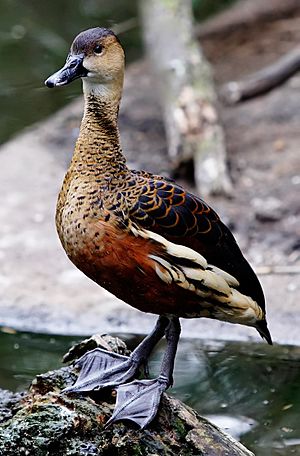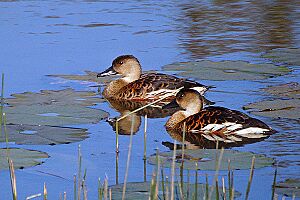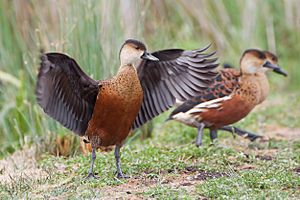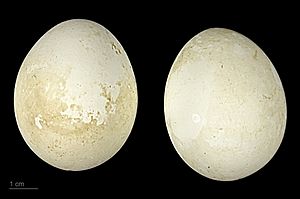Wandering whistling duck facts for kids
Quick facts for kids Wandering whistling duck |
|
|---|---|
 |
|
| Conservation status | |
| Scientific classification | |
| Genus: |
Dendrocygna
|
| Species: |
arcuata
|
| Subspecies | |
|
|
The wandering whistling duck (Dendrocygna arcuata) is a special type of whistling duck. These birds live in warm, tropical, and subtropical areas. You can find them in places like Australia, the Philippines, Borneo, Indonesia, Papua New Guinea, and other Pacific Islands.
Contents
About the Wandering Whistling Duck
These ducks used to be called "tree ducks." They got their new name because of the loud whistling sounds they make. Their wings also make a whistling noise when they fly!
They have long necks and legs, looking a bit like a mix between a goose and a duck. Their head and neck are strong, with a darker color on top of their head and the back of their neck. Their chest has black spots, and most of their feathers are dark brown.
Wandering whistling ducks are usually about 54 to 60 centimeters (21 to 24 inches) tall. They weigh around 750 grams (about 1.6 pounds).
What Wandering Whistling Ducks Eat
These ducks mainly eat plants. They enjoy grasses, waterlilies, and other water plants. Sometimes, they also eat small insects and tiny water creatures with backbones.
Where Wandering Whistling Ducks Live
The wandering whistling duck loves water. They live in deep lagoons, flooded grasslands, or dams. They rarely leave the water's edge. These ducks are excellent swimmers and can dive easily underwater.
Life Cycle and Reproduction
Wandering whistling ducks lay their eggs during the tropical wet season. This usually happens between December and May.
A female duck will lay about six to fifteen eggs. She builds her nest close to water. The nest is often hidden in tall grass or another safe, sheltered spot.
See also
 In Spanish: Yaguasa errante para niños
In Spanish: Yaguasa errante para niños





